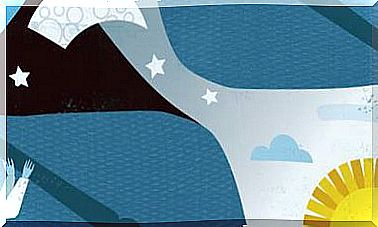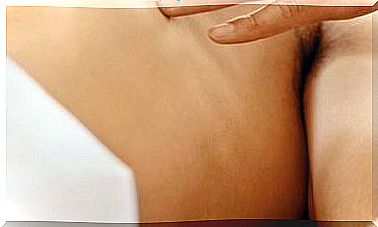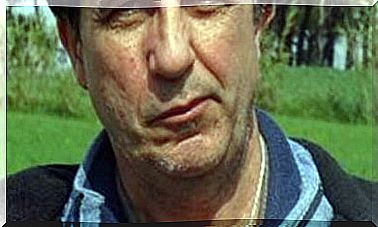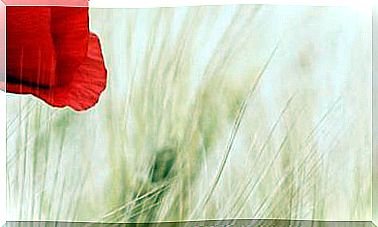Beyond The Mind Is Consciousness: How To Perceive It
Do we live in a universe of light created by the interaction between matter and intellect? If the mind were to stop, we would see the radiance of consciousness emerge.

The mind is the great forgotten. We look at ourselves every day in the mirror of our mind, but we do not worry about polishing it.
We do all kinds of exercises to be in shape, but we do not do mental gymnastics so that our mind tones its neurons and works better, it becomes less irritated and does not remain at the mercy of compulsive emotions.
Certainly, we are very mental, but we hardly ever do exercises in concentration, meditation, observation and control of the mental flow.
The mind is the instrument that allows us to perceive the world. We use the mind constantly as if it were a bow. We throw arrows perception to through our senses to capture the pieces that are the objects: a smell, a sound, the taste of an apple, touch a flower, beautiful forms of a sunset.
We consume the pieces captured in the dark chamber of our mind. Consumption is internal, but the hunt is done outside, in the outside world.
Separating the inner world from the outer world
Unintentionally, the mind narrates a story to us and builds for us a scenario that we end up confusing with reality.
The mind tells us that there is an external world full of pleasant, unpleasant or neutral objects and an internal world made up of our sensations, emotions, ideas and affections.
That inner world is inhabited by a mysterious being that we call Yo. We don’t really know who he is, but we think he’s the one who gets up in the morning and goes to bed at night. It responds to our name and is loaded with interests and expectations. Hunger is its engine and desire, the rudder that guides its course.
With all this we make an essential mistake: we end up identifying with the mind and the self that inhabits it. The inner world is ourselves and the outer world is there in front of us, in front of our eyes, with all its imposing presence.
We thus create a painful border between the self and the world, the existential fracture that definitively separates us from the universe. Inside and outside they become two basic categories of our existence.
The inner world is mental and private. The outside, physical and public world.
Where does the light come from?
Then the subject of darkness is born, our little everyday self, crouched in the cave of the brain and constantly being crushed by the limitations imposed by reality.
The subject of darkness prepares us for the second great mistake: to think that light always comes from outside, when in reality the only light that really illuminates the world is the light of consciousness.
In a beautiful passage from the Upanishads , ancient Indian thinkers inquired about the true nature of light.
Where does the light come from? From the sun, is the most obvious answer. However, when the sun goes down, where does the light come from? Of the moon, and when there is no moon? Of the fire, and when does the fire go out? Light comes from the voice, because if one person calls another in the dark, they go to the place where the voice comes from. And when does the voice stop? The light comes from the mind, because in the dark and in silence we can see a world of inner images. And when does the mind stop working? There is then the light of consciousness, the only source of unreflected light.
Are consciousness and mind the same?
The self is born by confusing the conscience with the mind. The self is an essential confusion, and that is why we are always so restless and restless.
From the point of view of Indian philosophy, the identification of consciousness with the mind is a fundamental error. The Yogasutra, like many other classical texts, affirm that we are not the mind, that mind and consciousness are totally different things.
There are two basic principles: the primordial matter or nature that forms the framework of the natural world and the pure consciousness that is capable of knowing this world.
Matter is changing, dynamic and active, but unconscious and incapable of knowing. Consciousness is immutable and inactive, but it is capable of knowing the material world and of knowing itself.
Consciousness in its pure state has no content, it is empty, but when it comes into contact with matter it assumes different forms. We are then aware of the cat, the dog or any other particular image, sound or taste.
It is very difficult for us to imagine this pure consciousness, since we always see it entwined in matter and assuming concrete forms.
We can imagine it as sunlight : a light so intense that it is blinding and does not allow us to see anything beyond its incandescent glow; white light without gaps, pure spark, momentary but eternal flare.
The finest matter
Matter and spirit are like a blind man and a lame man. Matter can walk but does not see its destination. The spirit can see, but cannot walk.
The spirit straddles matter and, mounted on its back, shows it the way. This path is the creation of the world, the fruit of the miraculous collaboration between spirit and matter.
In this creation matter lit by the spirit is perceived. Spirit, light, becomes entangled in matter and is trapped in darkness.
The mind, contrary to what it seems, is material and unconscious. It does not shine with its own light, but with the reflected light of consciousness. The mind is dark, although it seems to illuminate all perceptions.
The most subtle part of the mind, the intellect, is the most refined form of matter : translucent matter capable of reflecting the light of consciousness. The mind is a special form of subtle matter that acts as a link between gross matter and consciousness.
Consciousness is trapped by the material
The diamond metaphor helps to understand it better. The mind is like a diamond. The diamond does not glow in the dark, but if we open the window a little to let a ray of light pass through it, then it will shine by reflecting a rainbow of colors throughout the room.
The ray of light was white, but as it intersects with the wonderful diversity of matter, it reflects an infinite variety of hues. The polychrome of the diamond is the polychrome of the world.
The diamond is actually dark, only visible by external light, and yet illuminated by the beam it looks like a lit lamp. Therefore, we normally believe that the mind is conscious, just as the moon appears luminous when reflecting the sunlight.
The mind simultaneously produces a diversification of the neutrality of pure consciousness – the white light – and a limitation by trapping the light in the diamond, by restricting the freedom of consciousness and tying it to the eventualities of the world.
These are the two goals of nature. On the one hand, allowing the pale spirit to enjoy the colors of the universe and thus achieve the experience of diversity. On the other hand, make the spirit free itself from the material prison and regain its freedom. Consciousness wants to contemplate the game of nature.
That is the dark beauty of the material world. Consciousness sees and matter is seen in its beautiful and creative darkness, reflecting the sunlight of consciousness.
That generates the pleasure of diversity. Before him, consciousness is trapped like the genie in the lamp.
This is the first objective of matter: that the spirit enjoy it. But the enjoyment of the subject ends up generating fatigue and suffering.
This is due to the instability of change and the continuous oscillation between the extremes of pleasure and pain, success and failure, love and hate. In fact, it is a world of reflected light, which is absorbed by the intellect when in contact with consciousness.
The intellect is like an incandescent iron. It seems to shine with its own light, but it is actually the heat of the fire that brings the light.
In search of transparency
That is why we say that the mind is dark and we speak of the darkness of the intellect, because the intellect shines with a reflected light and the world it reveals to us is a world of darkness, of shadows, of reflections, of somewhat phantasmagorical appearances, like in Plato’s cave.
All we see are forms of darkness, material forms tinged with reflections, and the world is a mirror of shadows.
In reality, it is our own mind that obscures the light of consciousness, because if the mind ceased to function, we would be flooded by a flood of pure light and we would begin for the first time to see the reverse of the things of this with different eyes. world.
The fear of eliminating the mind is the fear of falling into unconsciousness and it comes from the confusion between mind and consciousness.
The intelligent human being tires of this shadow play and stops looking for the light in the dark. He inverts his gaze and begins to work for the liberation of the spirit.
Spiritual conversion indicates the turning point, the moment when an inward turn occurs and an attempt is made to discover the inner source of light: the Inner Sun.
Then you stop looking for pleasure, to look for the origin of pleasure. You stop looking for the loved object, to pursue love and you stop hoarding information to search for the source of knowledge. The tasty ceases to interfere with the healthy and the subject of darkness gives way to the subject of transparency.
Extracting the light trapped in matter to isolate it in its crystalline purity is the ultimate cure for the pain of existence.
Harmful Perceptions of the Mind
A calm mind leads to happiness. On the contrary, an altered mind produces distressed and psychotic personalities.
The concentration exercises help calm the mind and the same time, allow more alert.
Just as we do not go to infectious places or eat spoiled food, we should also avoid perceptions that are harmful to the mind.
We take spoiled food out of the refrigerator, but we do not ban spoiled thoughts from our minds. We often treasure them and ferment them to distill the rancid wine of enmity and hatred.
The mental hygiene, equal to that of the body, it should be one of our main concerns everyday.
How to raise the search for the Inner Sun?
Through simple meditation exercises it is possible to begin to understand why the mind, like the arms or legs, is basically nothing more than an organ.
Our true identity does not reside in the Moon of the mind, but in the Inner Sun that illuminates it.
The Inner Sun
It is the Brahman of the Upanishads , not to be sought in remote places : not in the lower worlds, not hidden in a cave, not high in the sky.
Brahman manifests itself in the luminosity of our mental perceptions: here and now.
The content of perception is matter and the light that illuminates it, the testimonial consciousness.
The testimonial conscience
It is one step behind the mind and can contemplate it when it works: we can observe our sensations, emotions, ideas and thoughts as objects external to us.
Consciousness is bright, sound and full. It is perceived when the eyes are closed tightly and a glow appears or when we cover our ears and listen to the sound of the sea. In India it is said that whoever does not see this light or does not hear this rumor is close to death.
Five steps to find the Inner Sun
- Sit cross-legged or in a chair with your back always straight.
- Close your eyes and focus your attention on the contact of air as it passes through the nostrils.
- The mind calms down by concentrating on the breath and a feeling of well-being is experienced.
- After a while the mind becomes distracted and thoughts and emotions appear. Let us observe how they arise, how they last and finally disappear. They are always transitory and do not belong to us.
- Let us return our attention delicately to the tip of the nose. As concentration increases, the feeling of well-being grows and the radiance of consciousness is revealed more clearly.
Books for Deepening Awareness
- After the ecstasy, the laundry; Jack Kornfield, Ed. March Hare
- Patañjali-Spinoza; Óscar Pujol and Atilano Domínguez, Ed. Pre-Texts









